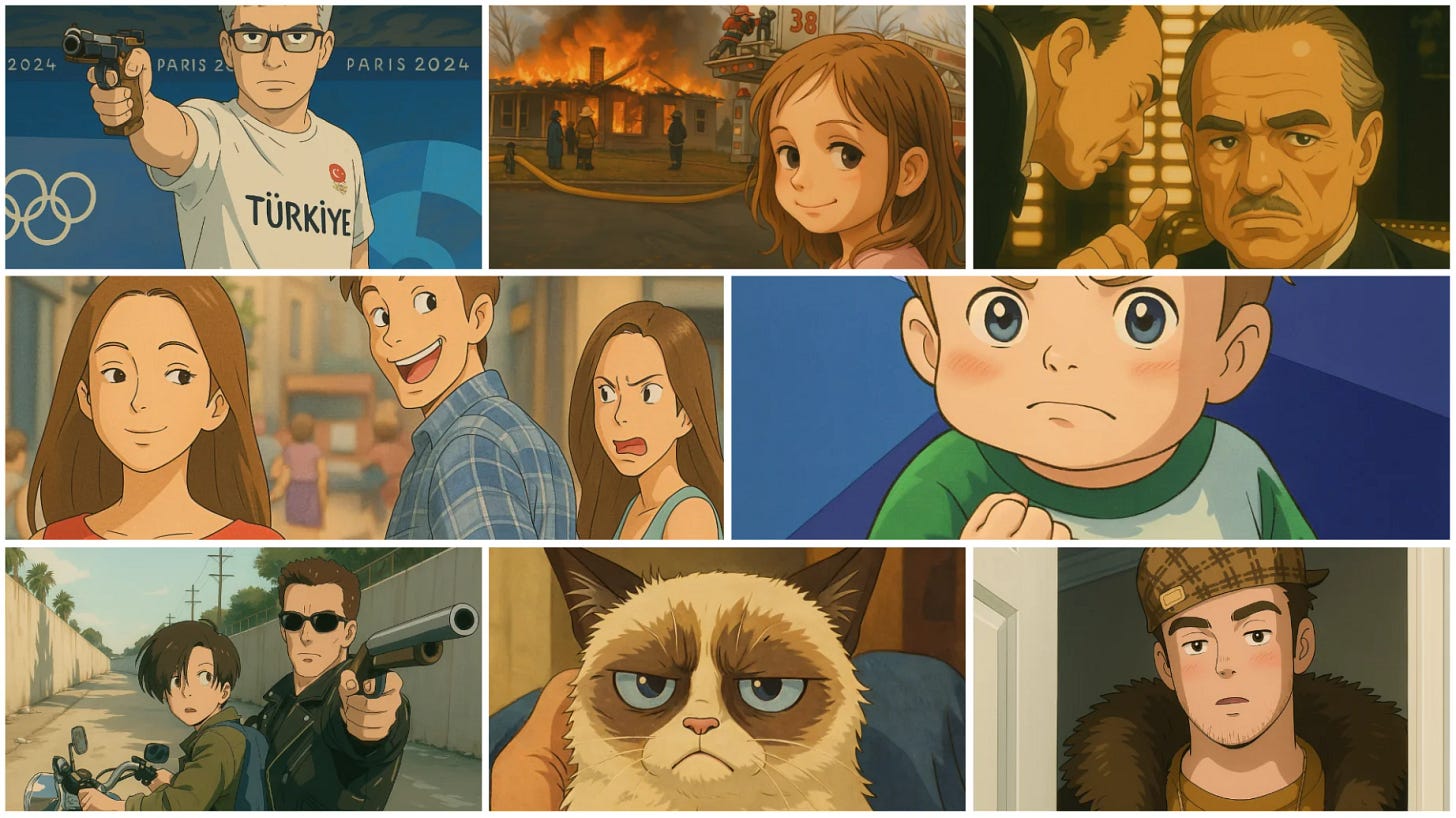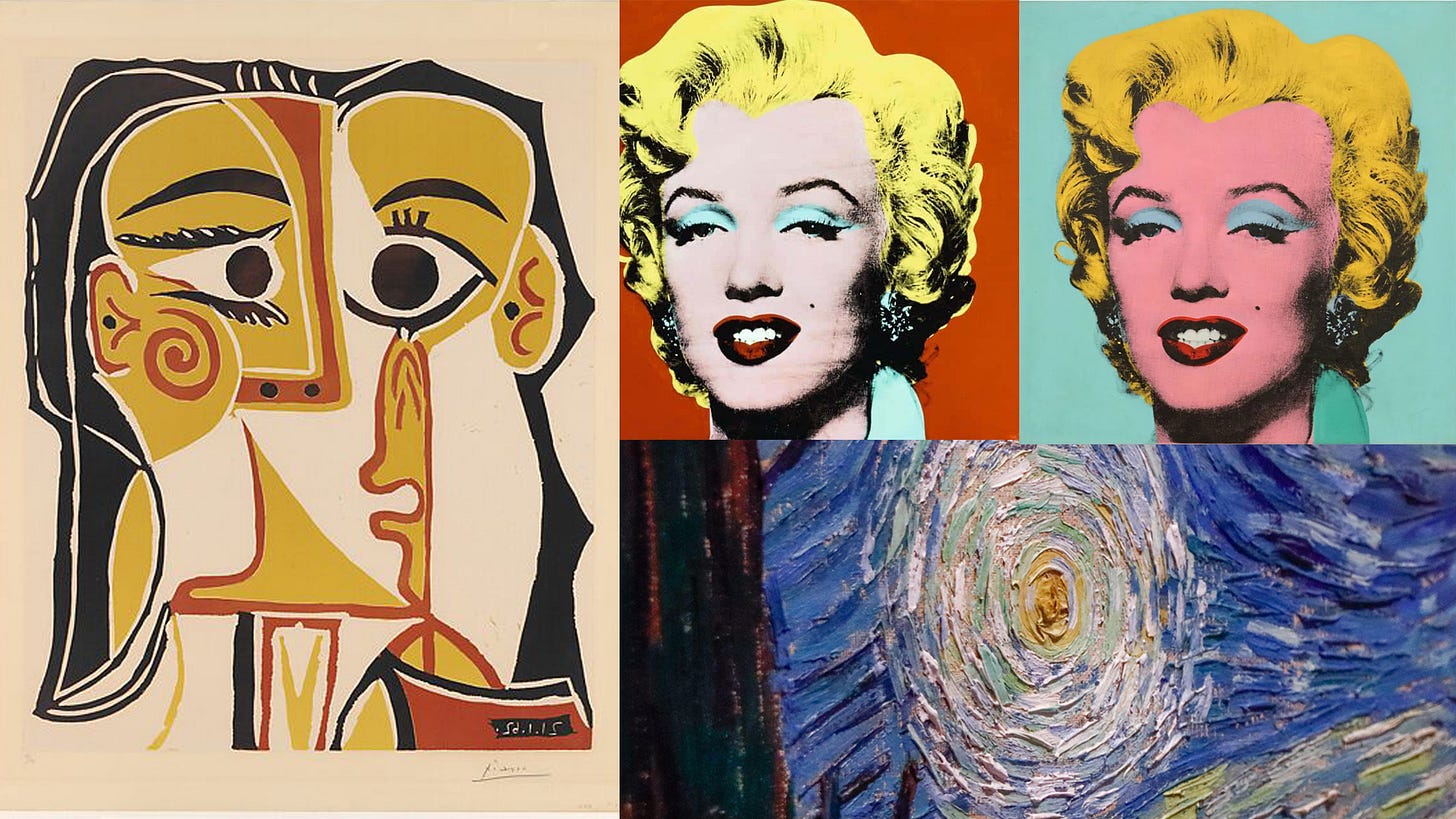Imitation Vs. Recognition
How AI-Generated Art is Eroding Our Sense of Humanity
Artificial Intelligence has been the It Girl over the past few years and the current explosion is likely just the beginning of a broader, irreversible technological shift. For past generations, it was the Space Race, then the Dot-com Boom — and for ours, it appears to be AI-powered everything. Along with any tidal wave-sized change in culture, comes projections of limitless promise and impending doom. In the short term, we’ll likely see a rapid disappearance of customer service and other low-skilled jobs, pulling the rug out from under millions of Americans. In the long term, new AI-related positions will emerge, and the job economy will adapt. However, we’ve also seen the consequences of the rapid adoption of AI-powered systems, such as insurance companies using AI to deny, delay, or underpay claims—exacerbating widespread frustration with exploitative practices. The possibilities and concerns surrounding artificial intelligence have been more astutely discussed by other writers and journalists, but in this post, my focus lies with AI’s impact on art.
Imitation Vs. Recognition
Just a few weeks ago, OpenAI released a feature allowing Ghibli-style image generation. Ghibli is a style derived from the work of Japanese animator, filmmaker, and manga artist Hayao Miyazaki. As AI-generated Ghibli-style images proliferated across social media, many were quick to recall Miyazaki’s vehement condemnation of AI art: “I am utterly disgusted…If you really want to make creepy stuff, you can go ahead and do it, but I would never wish to incorporate this technology into my work at all. I strongly feel that this is an insult to life itself.”
The core problem with AI art is that it’s solely dependent on imitation rather than recognition. Generative AI—even in its infancy—has mastered the ability to mimic the styles of writers, painters, and musicians. Its machine learning capabilities can deploy endless layers of sophisticated imitation to produce elaborate creations, but it fails to create art imbued with meaning and true recognition.
The concept of recognition within art is the central theme of American writer William Gaddis’s novel The Recognitions. In the novel, Wyatt, a troubled artist, finds himself caught up in producing forgeries of famous Renaissance painters and selling them as lost originals. While grappling with his sensitivities towards artistic creation, he defends himself stating: “Do you think I do these the way all other forging has been done? Pulling the fragments of ten paintings together and making one, or taking a... a Dürer and reversing the composition so that the man looks to the right instead of left, putting a beard on him from another portrait, and a hat, a different hat from another, so that they look at it and recognize Dürer there? No, it's... the recognitions go much deeper, much further back,” drawing a clear distinction between imitation and original works of recognition. Later on in the story, another painter further articulates the recognition contained in a work of art: “Everybody has that feeling when they look at a work of art and it's right, that sudden familiarity, a sort of ... recognition, as though they were creating it themselves, as though it were being created through them while they look at it or listen to it and, it shouldn't be sinful to want to have created beauty?”
Recognition introduces the human experience and implies an ability to see something for what it is, in context, and engage with it meaningfully, whereas imitation is produced merely for appearances. AI-art, and any cheap imitation, is intrinsically meretricious and lacks an injection of humanity. When you watch a Studio Ghibli film with its whimsical characters, soft colors, and warm sentiments, it evokes certain feelings in you. There’s intentionality and honesty seeping from each hand-drawn animation. When you listen to Don't Speak by No Doubt, you can feel (or recognize) the pain and sorrow of heartbreak that drove Gwen Stefani to write it. When you read Karl Ove Knausgård’s Min Kamp, there’s an inseparable human element to the writing and his stream of consciousness that becomes lost through imitation.
The Death of Originality
Each day we helplessly descend further into an abyss of infinite imitation powered by AI. Perhaps I am the old man shaking his fist at the sky, or a Luddite attempting to resist the inevitable advancement of technology, but this time feels different. In his novel, Gaddis references Gresham’s Law, which states: Bad money drives out good. In currency, this means that cheap metal with face value will slowly devalue and push out coins that are inherently valuable. Applied to art, this means mass-produced AI-generated imitations flood the market, while genuine, original work becomes rarer and less visible.
For example, here on Substack, there is an account titled Dostoevsky’s Blog that has over 21,000 subscribers consuming AI-generated content, while human writers labor and flounder in search of a modest readership. NaNoWriMo, which hosts an annual writing contest, found itself in controversy last year after allowing the use of AI. On YouTube, there are hundreds of channels producing daily videos that are entirely written, voiced, edited, and produced by AI. In this shifting market, the opportunity for an artist to be noticed becomes even more futile as these accounts can create content at 10 to 100 times the rate.
How long until record labels produce entire albums of catchy tunes through AI? How long until a Christopher Nolan–style generated movie wins an Oscar? How long until the New York Times Best Sellers list is full of writers who do not exist?



